Fridge Raider: NASCAR driver Kyle Larson
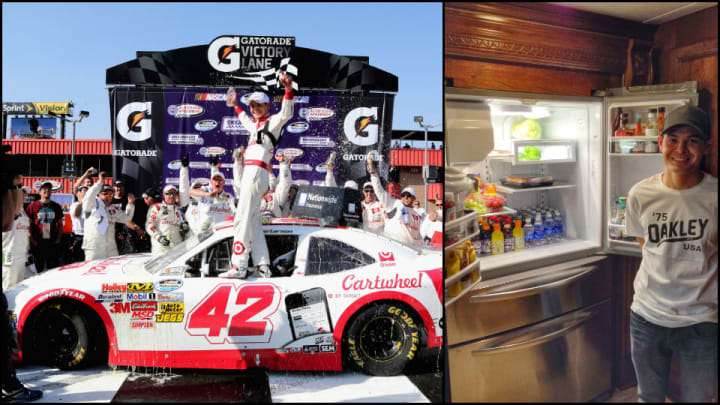
Plain beer makes Kyle Larson want to hurl. So when the 22-year-old NASCAR driver has to drink it—because, really, how could he avoid it, being 22 and a NASCAR driver?—he squirts a few drops of the flavor-enhancing liquid Mio into a can and calls it good. “If I squeeze a Mio into beer, I can drink it,” explains Larson, as if that explanation clears the whole thing up.
Fridge Raider: New York Giants defensive end Jason Pierre-Paul
Mio-beer is Larson’s most unusual dietary habit, although not one the 2013 Rookie of the Year practices on a regular basis (“I really don’t like beer—I just have it for my friends,” he says.) Otherwise, his nutritional approach is typical of most just-out-of-college kids, with a fridge full of frozen pizza and snack foods … And two heads of iceberg lettuce. “I don’t really watch what I eat, but I like salads,” Larson says. “I eat lots of salads.”
Salad aside, Larson says his diet is not as healthy as some other guys in the garage. “I’m friends with a lot of guys who watch what they eat and work out a ton,” he says. “But I think being young is a good thing for me. I’m sure in a few years I’ll have to watch what I eat and work out a ton, too.” But for now, here’s what you’ll find in Larson’s fridge:
Peanut butter pretzels: Rich, creamy peanut butter wrapped in a salty pretzel shell? We can’t blame Larson for being fixated on these bite-sized snacks, which are his food of choice during his regular late-night TV watching. “They’re really addictive,” he says. “Once you start eating them, it’s hard to stop.”
Tabasco: Larson’s go-to race-day meal includes an ingredient most athletes wouldn’t touch before competition: Hot sauce. Larson says he adds the spicy condiment to a baked chicken dish his girlfriend makes for him before races. “It’s got a ton of flavor, and it fills my stomach,” he says. “The races are really long, so I don’t want to be hungry during a race.”
For professional athletes, talent isn't enough to achieve greatness
Gatorade: “I drink Gatorade all the time,” says Larson. “My favorite is the purple one.” The driver keeps a bottle in his racecar to sip and prefers the sugary drink to water or other beverages at dinner, too. “The only time I drink soda is with alcohol,” he says.
Frozen pizza: Technically, Larson has two refrigerators: One in his Huntersville, North Carolina home and one is his motorhome. “All of us drivers stay at the racetrack,” he says. “It’s like our second home.” And at his second home, Larson always keeps a regular supply of frozen pizza or pizza rolls on hand. “I don’t eat that stuff all the time, but I definitely have it stocked if I get a craving,” he says.
Beer: Larson doesn’t like beer, but he still keeps it in his fridge for entertaining, along with some Mio for himself. “Usually I can’t drink beer—I’ll puke—but I’ll take a sip if it has Mio in it,” he says. While not as appealing as, say, a Boilermaker or Corona with lime, Larson’s beer beverage ranks high with us for creativity.
Iceberg: Larson doesn’t care that this lower-nutrient lettuce gets a bad rap next to nutrition darlings kale and spinach. He likes the way iceberg tastes, which is why the driver always keeps two heads in his fridge. “I like it in a house salad with tomatoes, onions, cheese, croutons, and a little bit of cranberries,” he says. “And I’ll have it on burgers.”
Looking Back at the Evolution of the Indy 500
1911
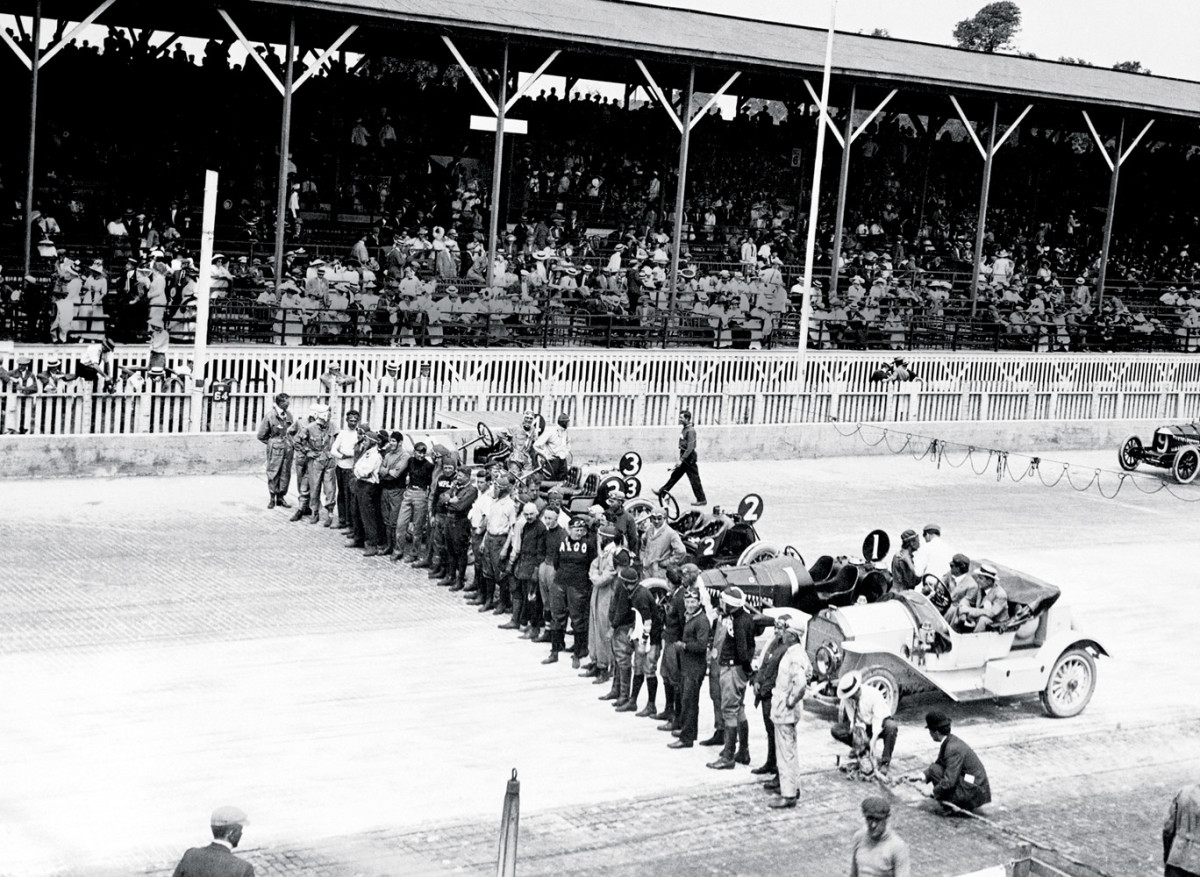
The lineup for Indy's first 500-mile race was led by a convertible pace car (lower right). The photographer? Yes—it's Mr. Henry Ford.
1913 - Where there's a Will...
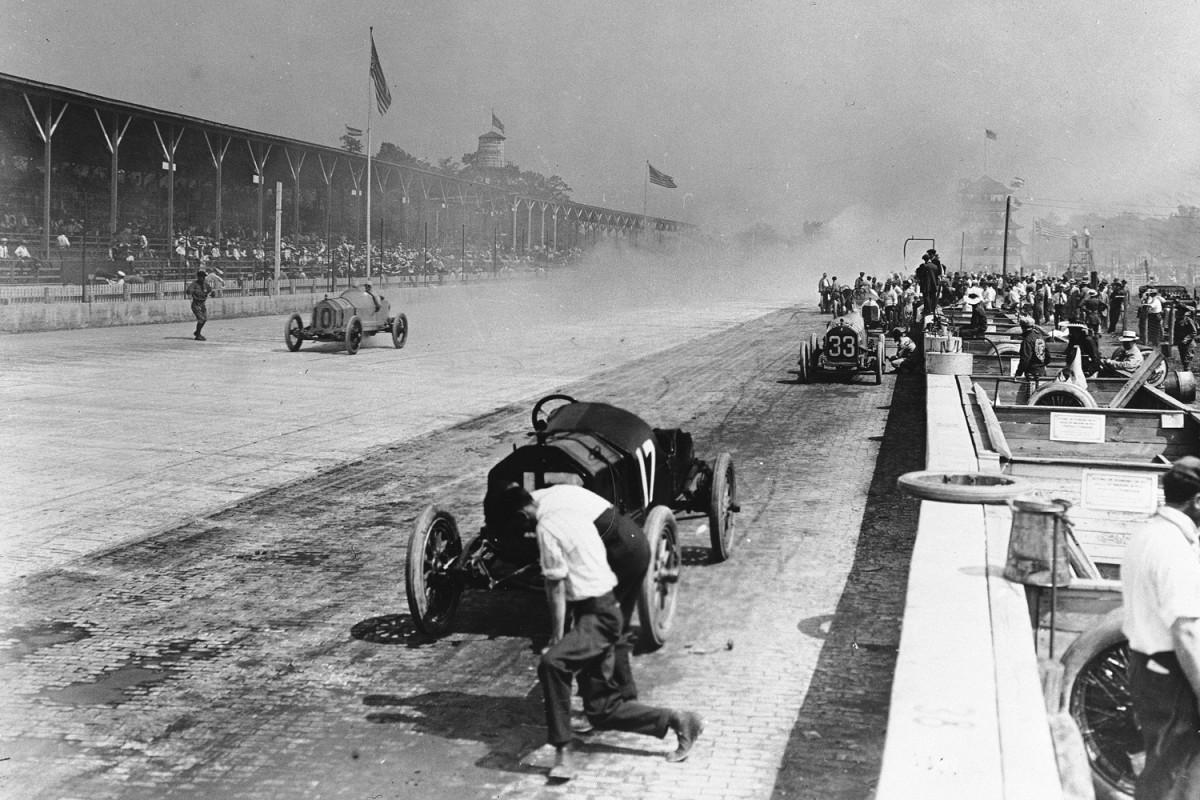
Billy Knipper (10) passed Billy Liesaw (17) and Bill Endicott (33) as they pulled over to pit. Liesaw, though, wound up the fastest of the Billys, finishing 14th.
1923 - Calm Before the Vroom
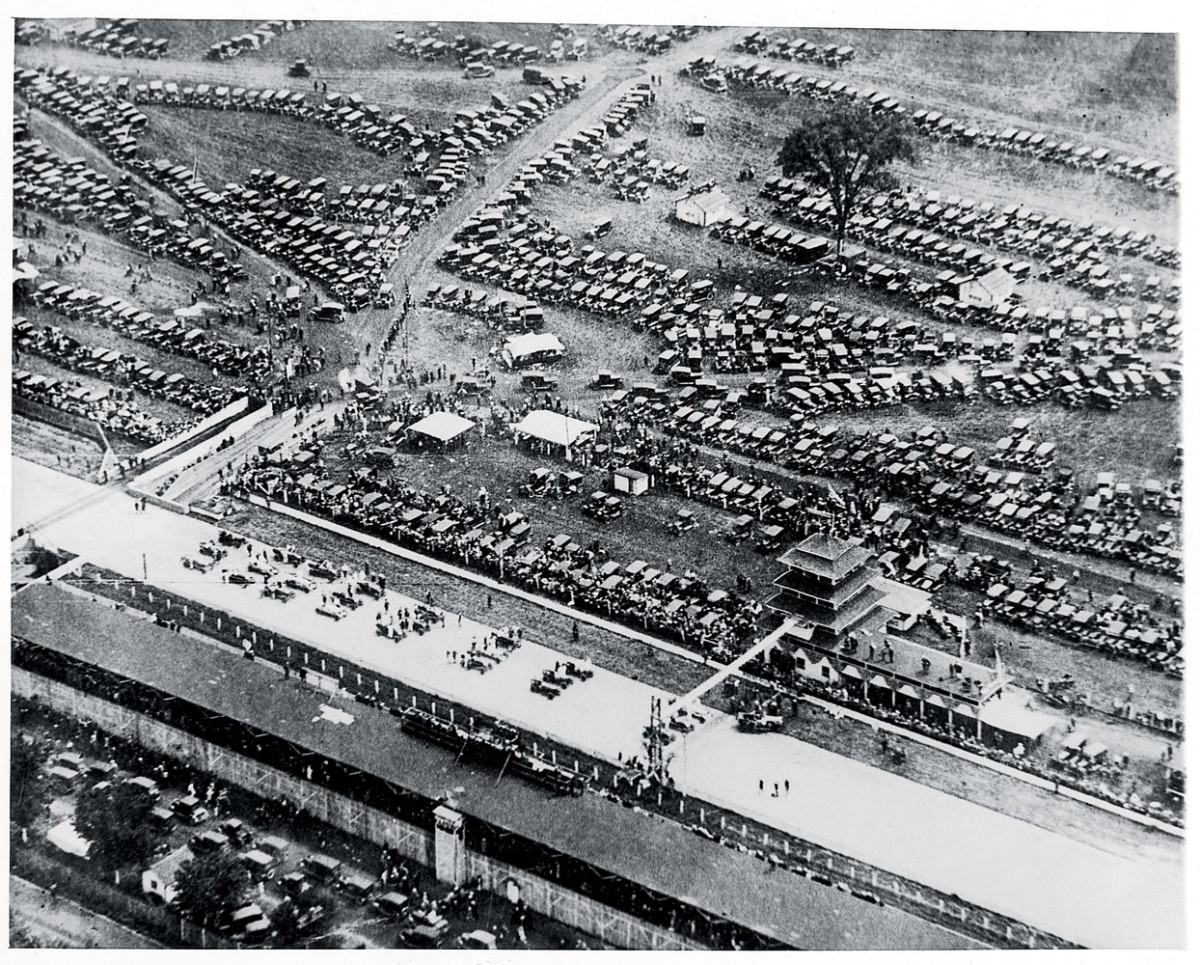
Fans were still milling around their own cars in the infield as pole sitter Tommy Milton led the field past the starting line.
1926 - Circling the Bricks
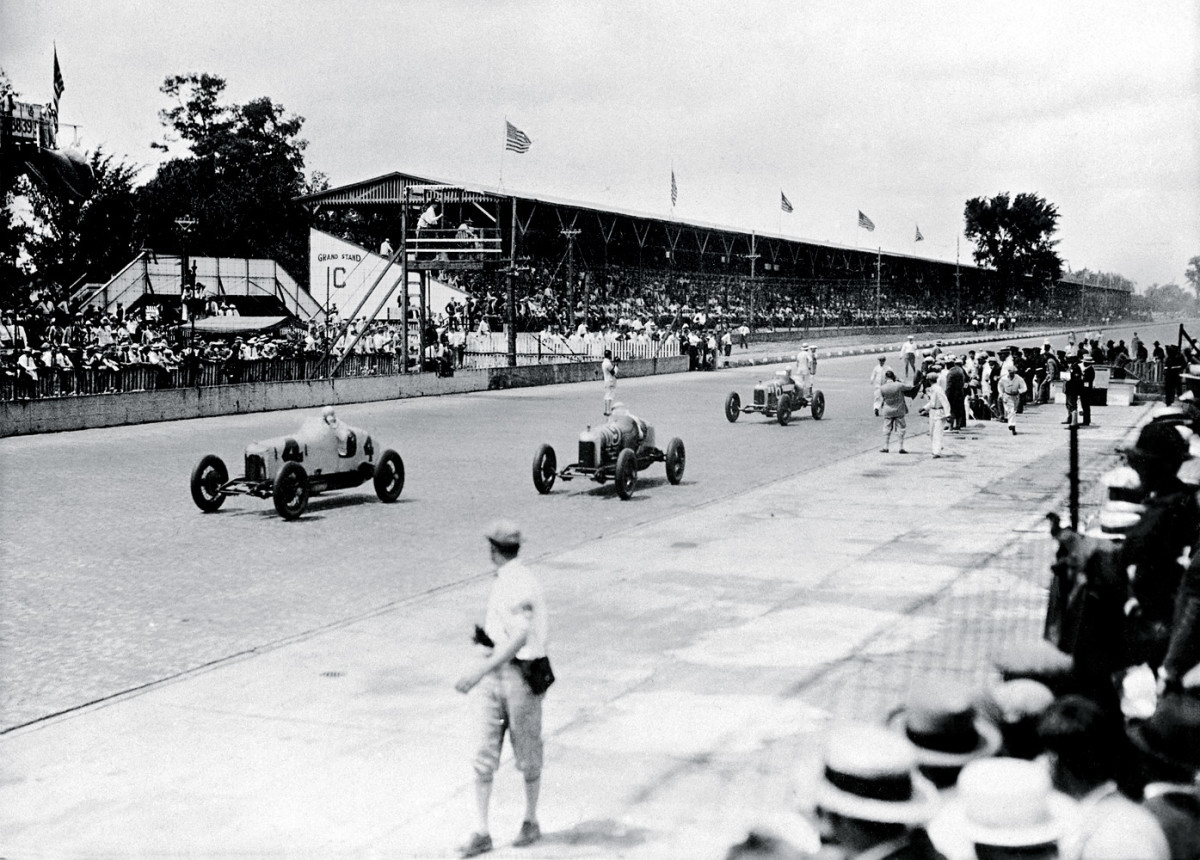
The track isn't the only place to find cars during a race: In the Roaring '20s fans parked their Model T's in the infield. Back then the racing surface exposed a while lot more than a yard of bricks-repaving in asphalt was still a decade away, as was swigging dairy for champs. Rookie Louis Meyer, who would later start the ritual when he became the 500's first three-time winner, was a milkless victor in '28.
1931
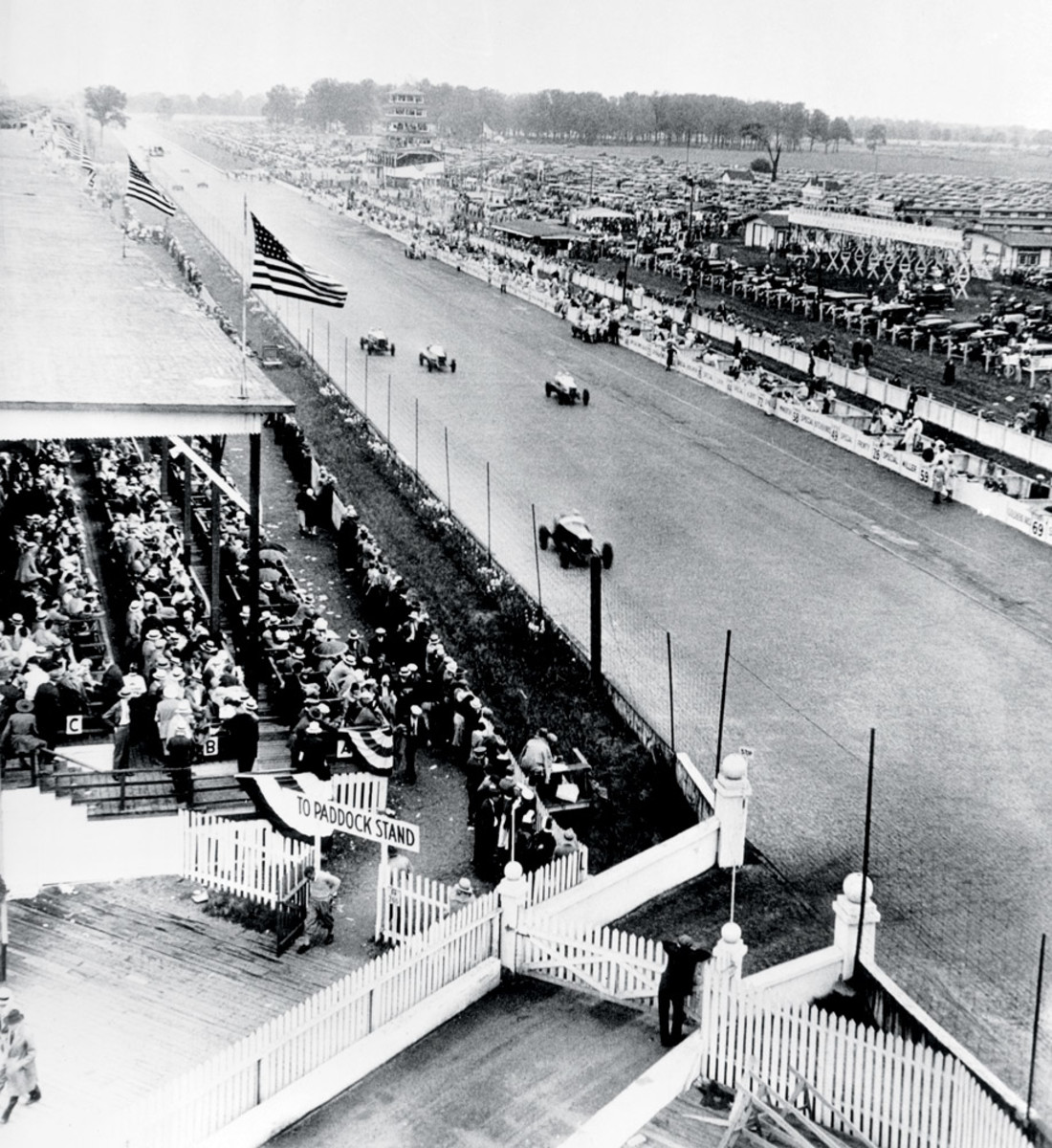
The "paddock" overlooked this straightaway, and in a messy race Billy Arnold broke an axle, Wilbur Shaw went over a wall and Louis Schneider won.
1938 - The Checkers Stand Alone
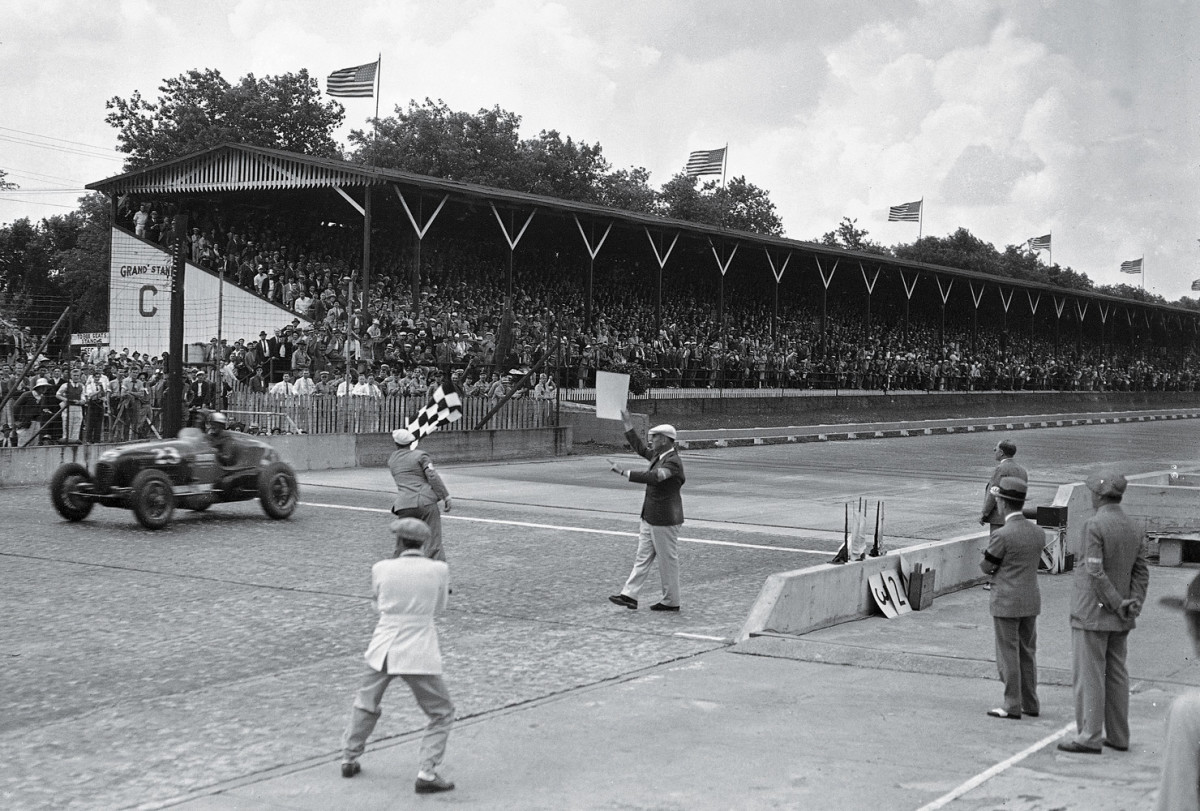
With no traffic to challenge Floyd Roberts at the finish, the started signaled his victory while moving safely toward the middle of the track.
1948
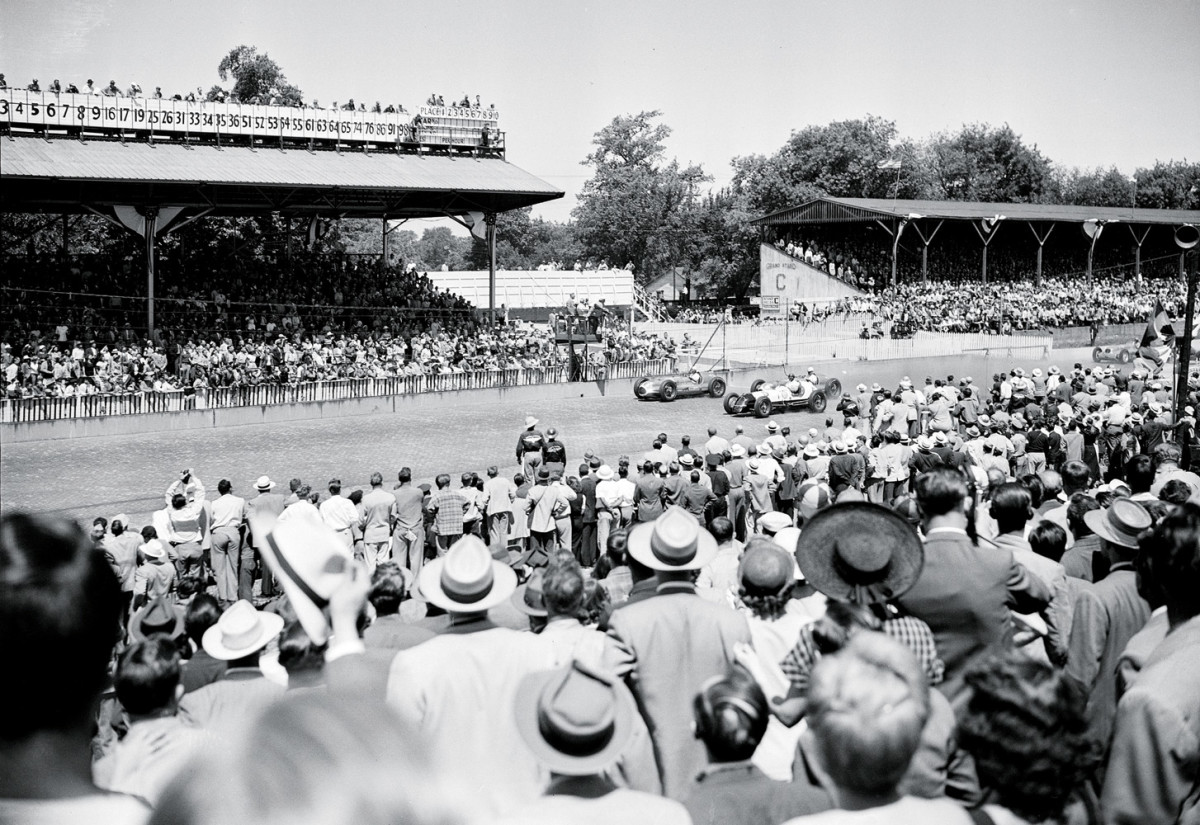
Crowds came out in full force (as well as in full headgear) and saw Mauri Rose win his third, and last, 500. Rose's car is far left at the starting line.
1949
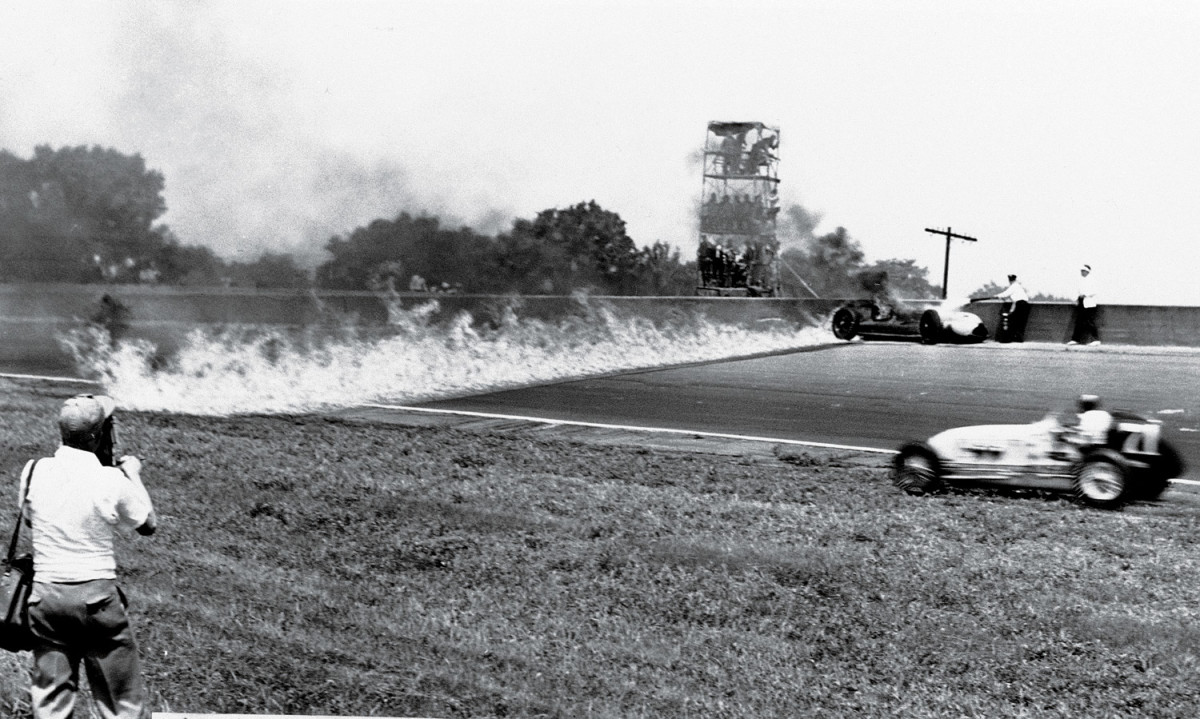
Norm Houser took an infield detour to dodge the trail of fire left by Duke Nalon's crash into the retaining wall. Nalon's injuries knocked him out of racing for two years.
1952-59 - It's What's Inside That Counts
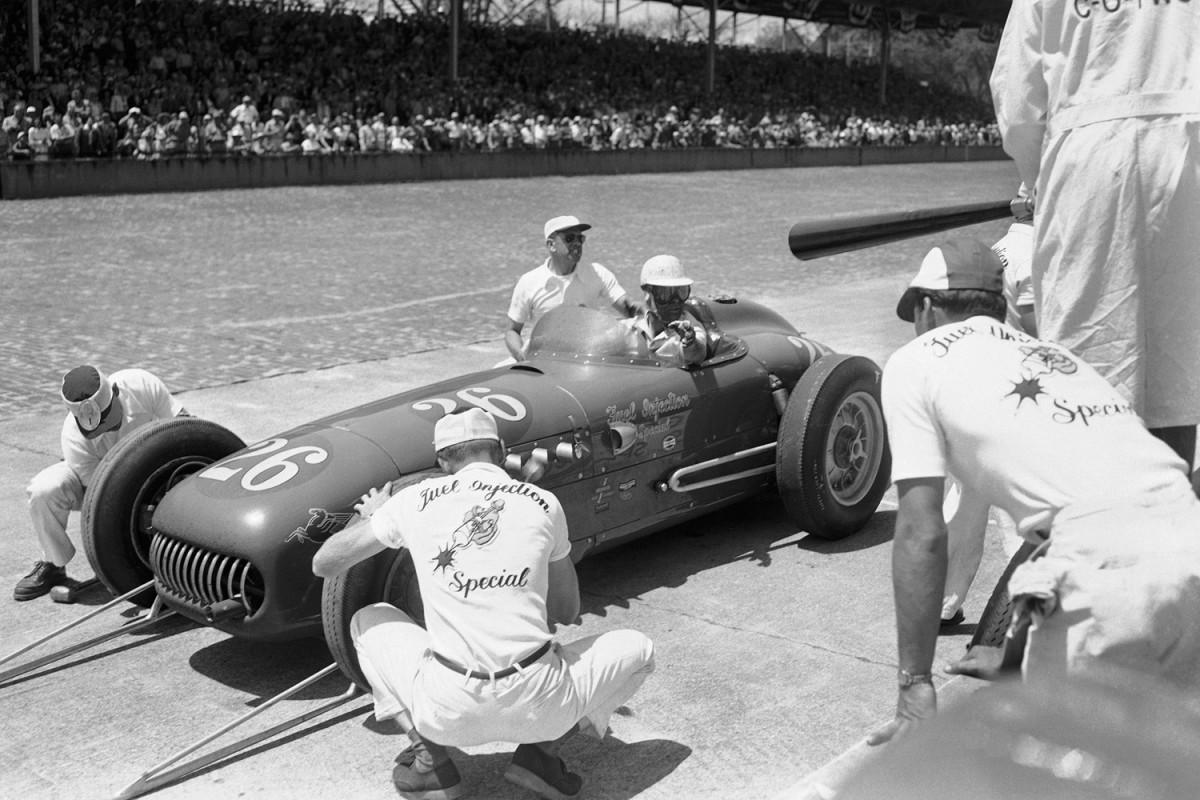
The chassis were different, but the engines remained the same. Troy Ruttman and Rodger Ward pitted a 1952 Kuzma and a '59 Watson, respectively, to tune up their Offys, while Sam Hanks, behind the wheel of a Salih in '57, safely revved his around a retaining all. Another thing they all had in common: They won their races.
1957
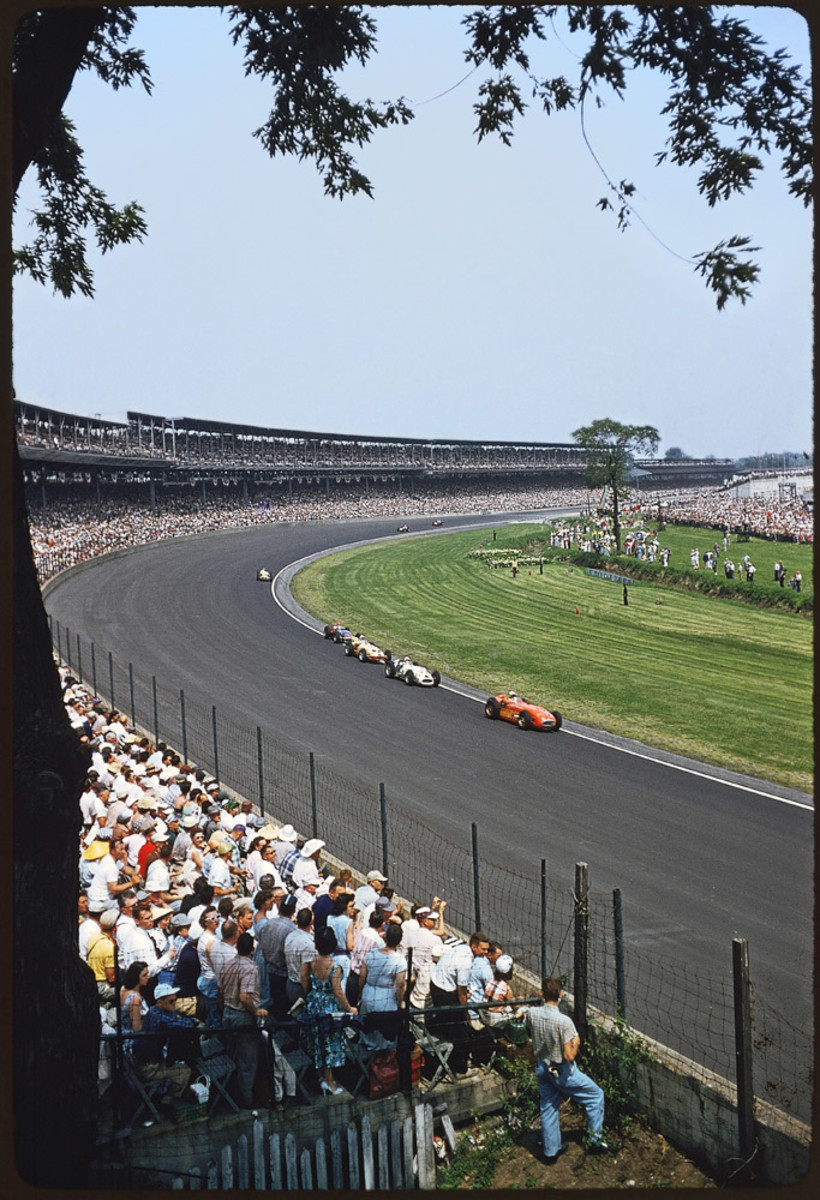
Despite the high casualty rate on the track crowds continued to turn out, enthralled by the ever-increasing speeds of roadsters roaring round the bend.
1964 - Times Are A-Changin'
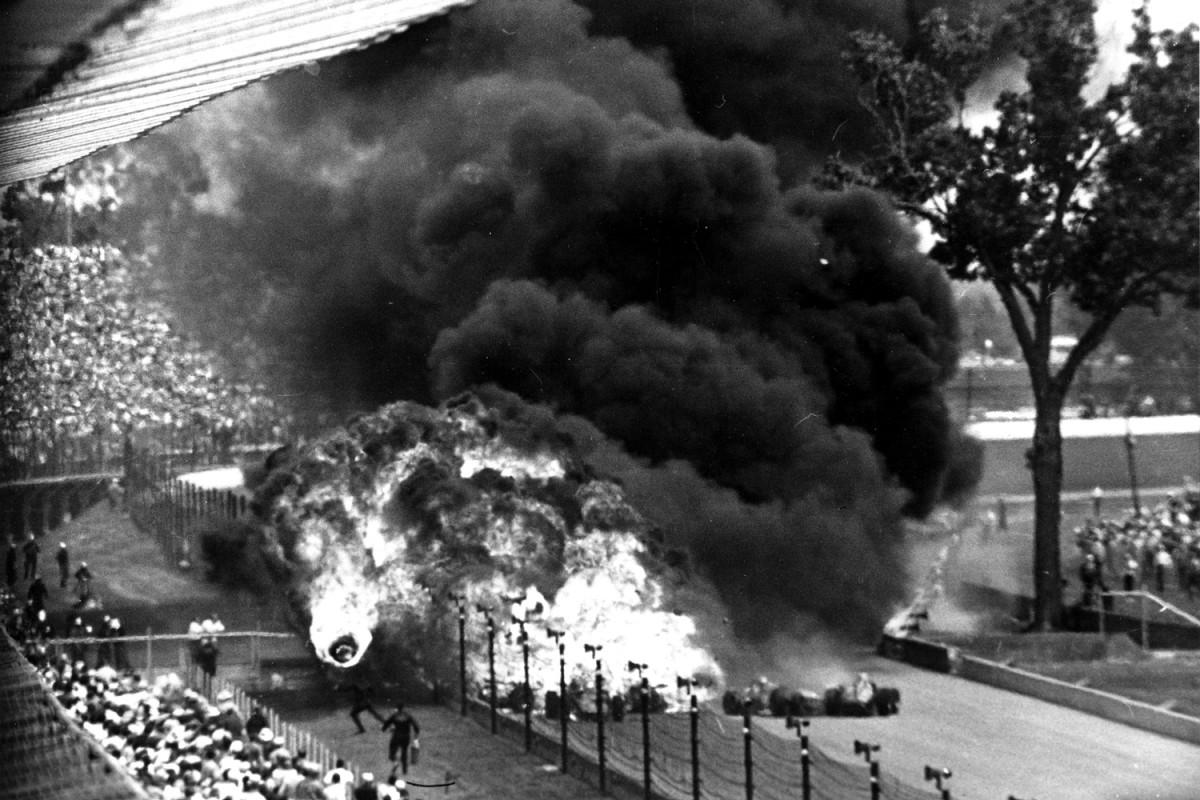
Black clouds of gloom hung over the Speedway after the deadly '64 crash, the first time the Indy 500 was halted for an accident. The second was two years later, when no one died, but rookie Jackie Stewart endured heartbreak; he led 40 laps before late mechanical failure ended his title hopes.
1969
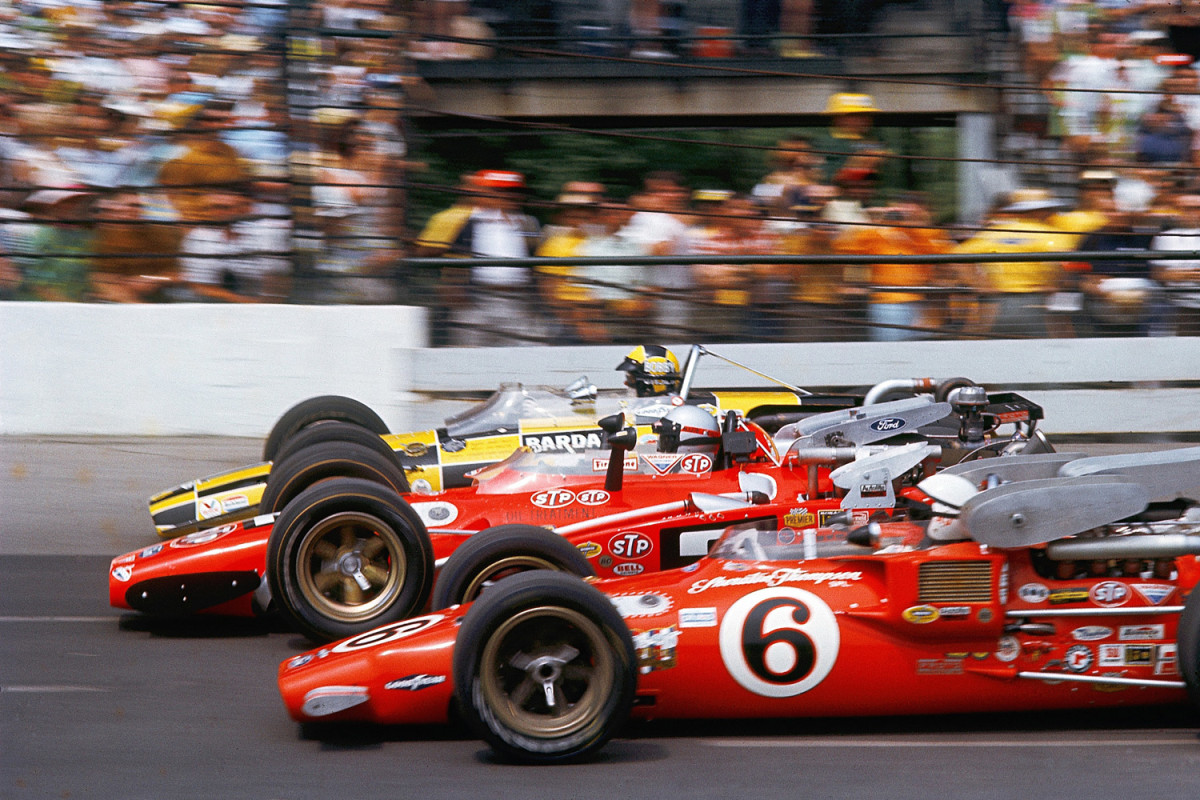
Although he was flanked by past winners Bobby Unser and A.J. Foyt (6) at the start of the race, Mario Andretti prevailed to take his first and only checkered flag.
1973 - A Career Cut Short
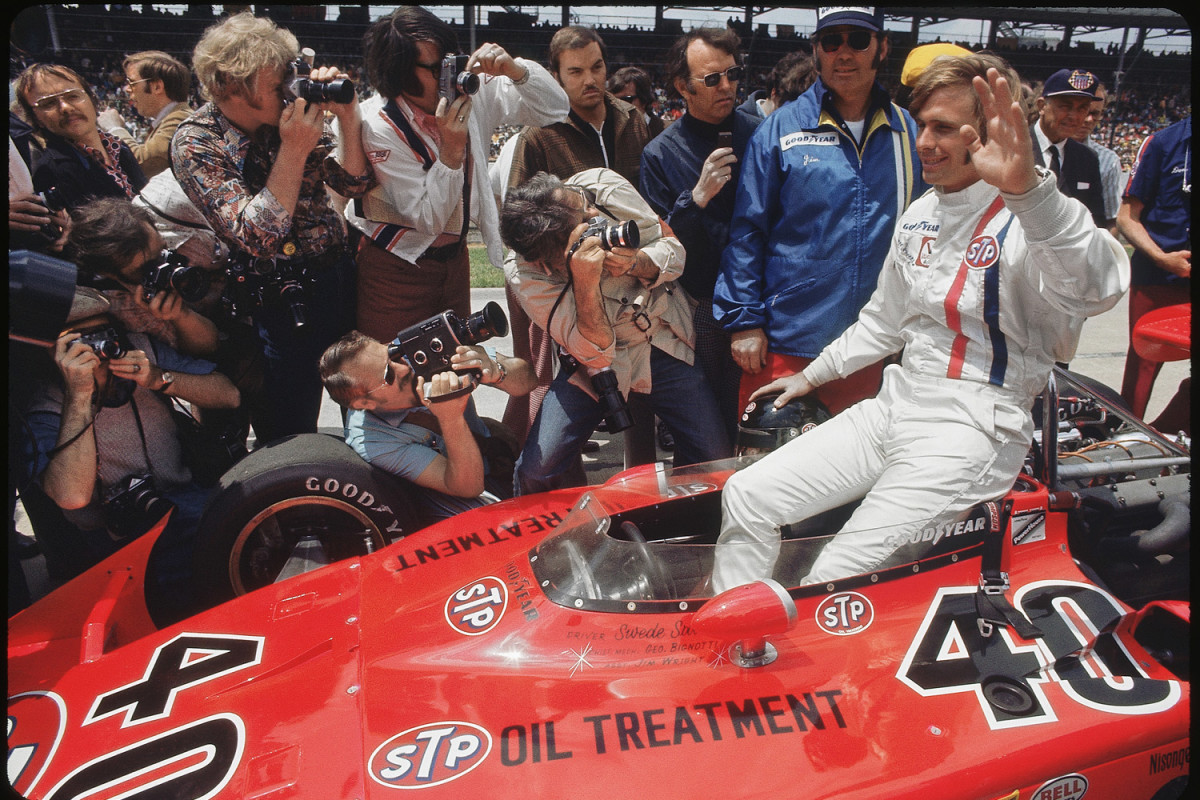
Swede Savage was already a darling at Indy, a sunny 26-year-old out of California with loads of speed. He had driven his Eagle-Offenhauser to a qualifying record of 196.580 mph when these photographers descended. Two weeks later, in the 500, Savage was battling for the lead and carry a full tank of gas when he crashed into the inside wall and was thrown, engulfed in flame, across the track. He died 33 days later.
1975
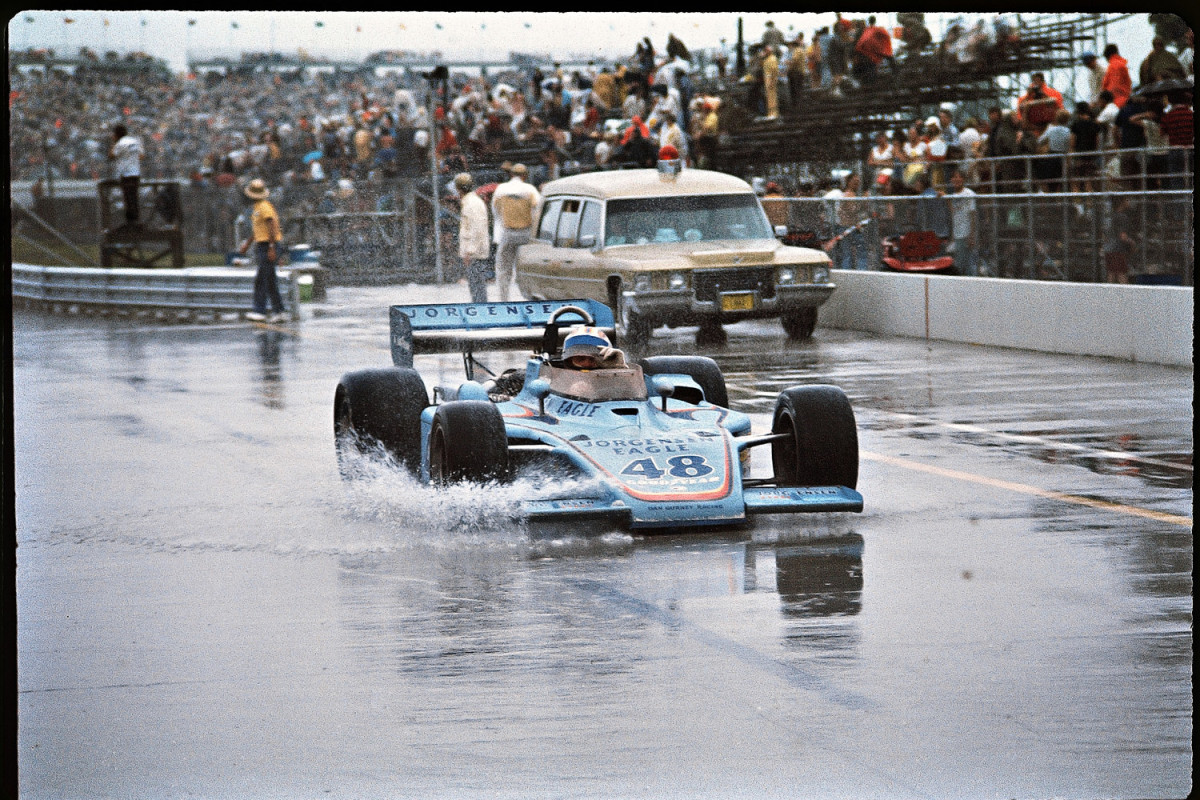
Not to be outdone by Al's two titles, Bobby nabbed his splashy second victory after he was leading on the 174th lap and the race was declared over on account of rain.
1984
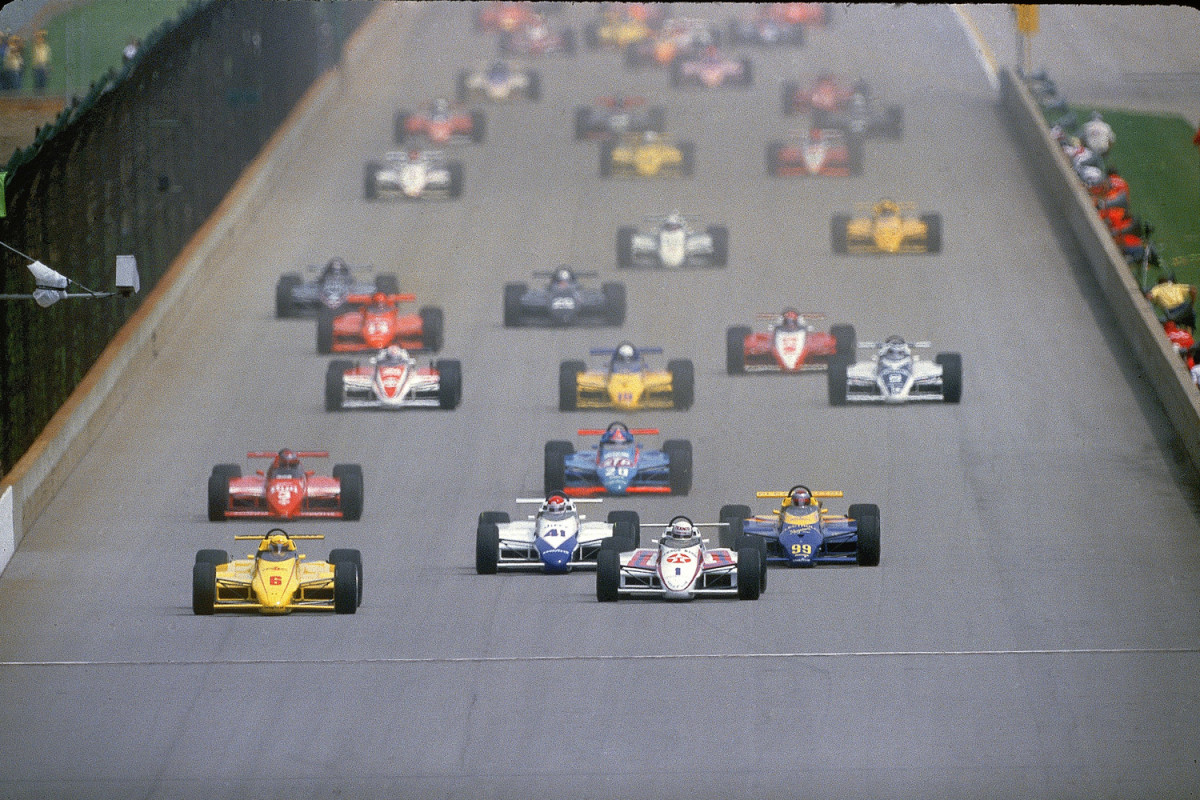
Starting from the third position, Mears (6) led the field fro 119 of the 200 laps, his only Indy victory that did not start from the pole. He won a record six poles at Indy.
1987
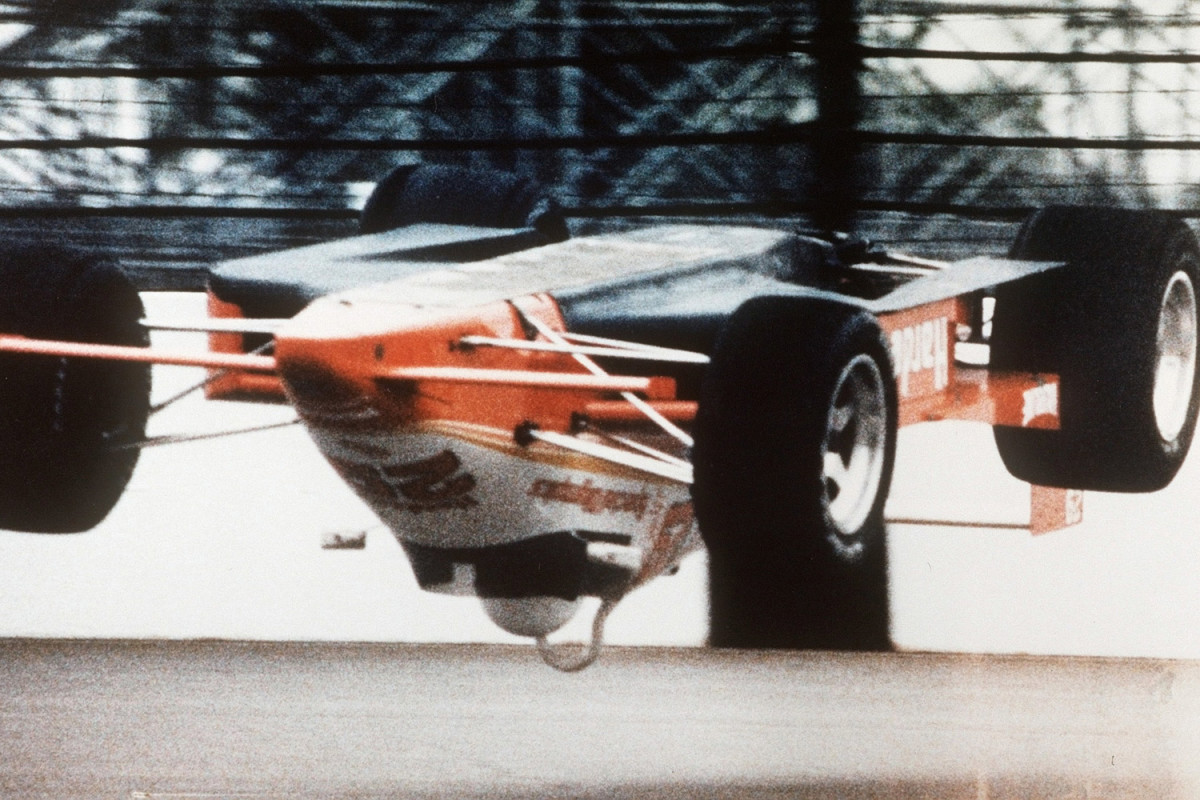
Pancho Carter flipped head over tailpipe in practice, sliding on his head for more than 800 feet. Uninjured, he raced (with a new helmet) three weeks later, finishing 27th.
1996 - A Time of Turbulence
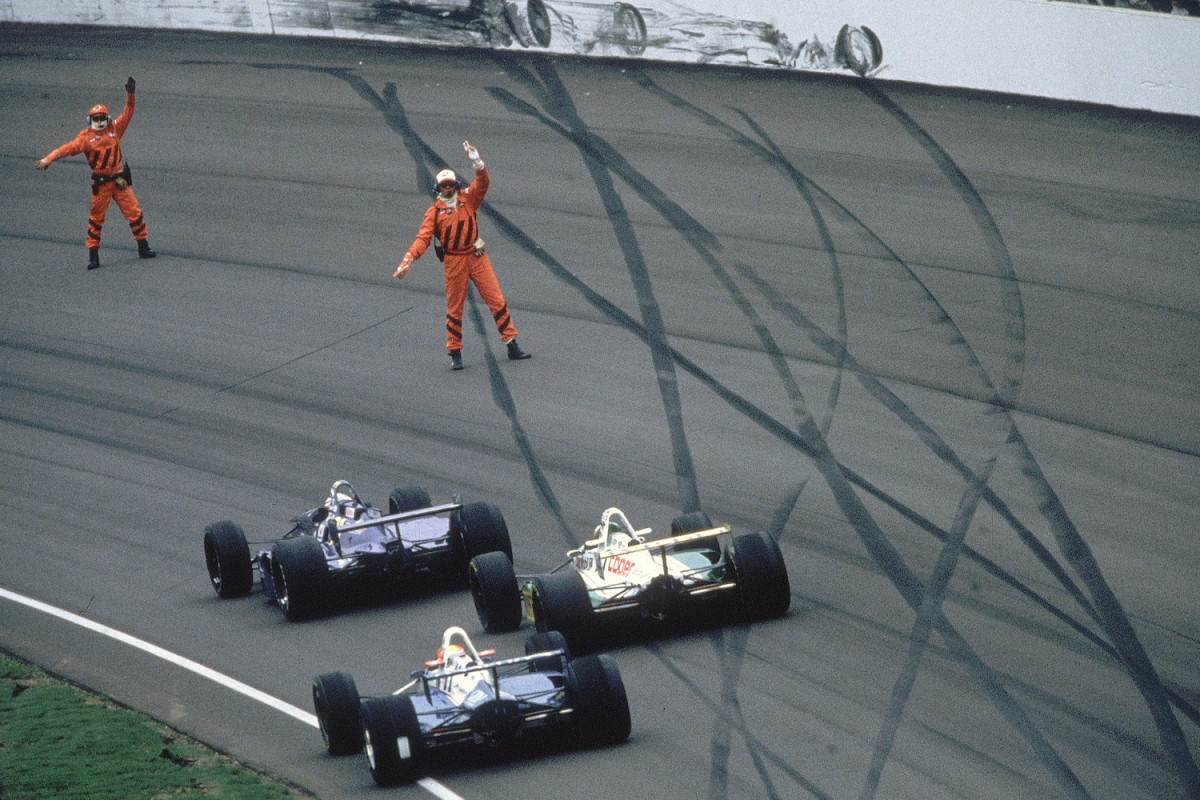
Boycotted by many drivers, the first postsplit 500 retained some golden rules-slow down to avoid debris and don't follow the rubber to the wall.
1998 - A Feeling in the Air
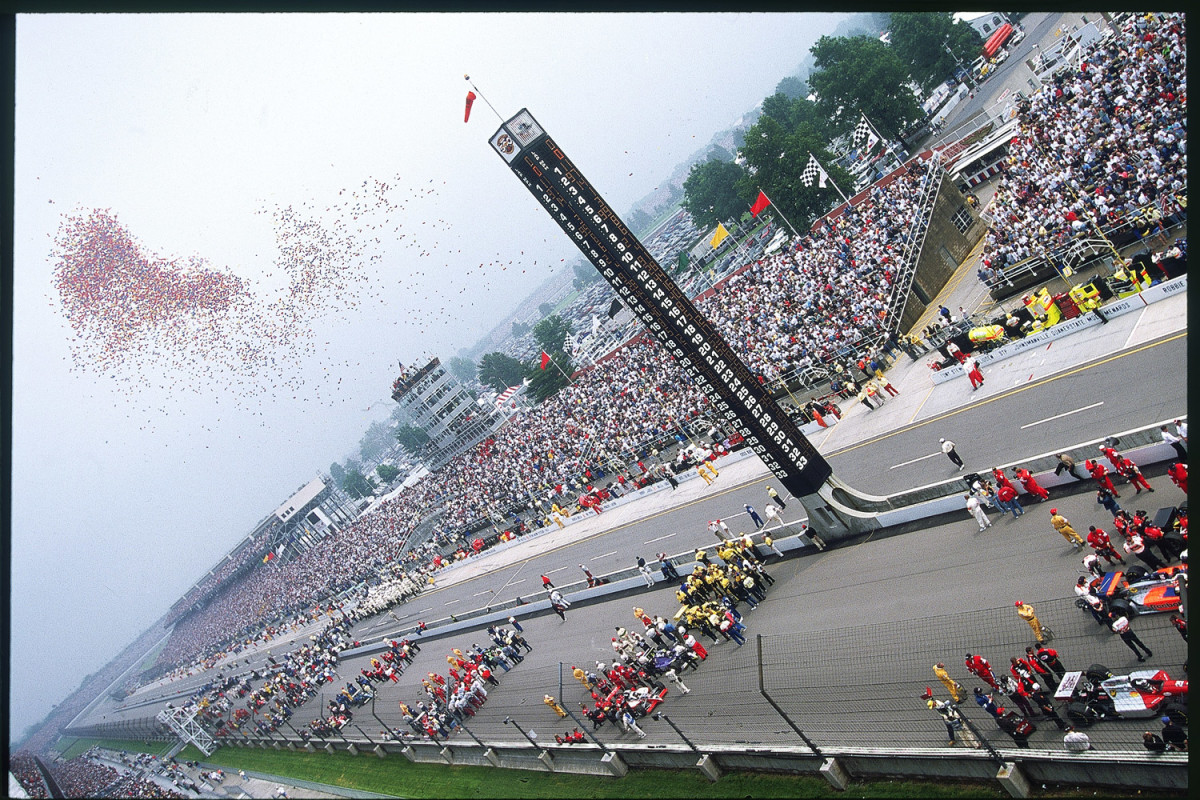
The annual tradition of getting the 500 underway by releasing some 30,000 helium-filled balloons (just as the last note of Back Home Again in Indiana is sung) presaged a paradoxical race. It was once full of no-names (many top drivers were in CART) and incomparably rich. The biggest chunk of the record $8.7 million purse went to winner Eddie Cheever Jr., who came from the 17th position for his only 500 victory.
2001 - What a (Bas-) Relief
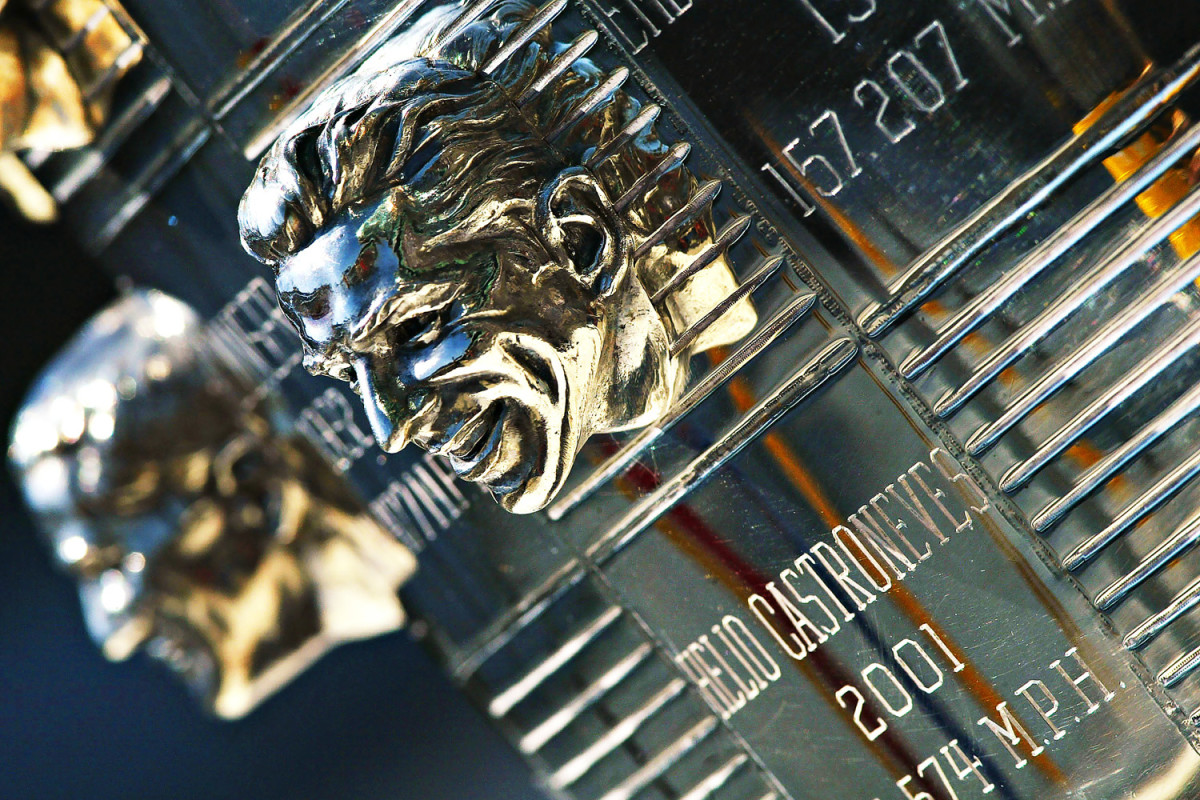
When Helio Castroneves became the eighth rookie to win the 500, his smiling mug was immortalized in sterling silver alongside every winner since 1936. The 75-year-old Borg-Warner Trophy weighs around 110 pounds and stands about 5' 5", so it's no small thing to hoist. It's also valued at $1.5 million, a nice sum but not as valuable as winning the Indy 500: That, as any driver would say, is priceless.
2005
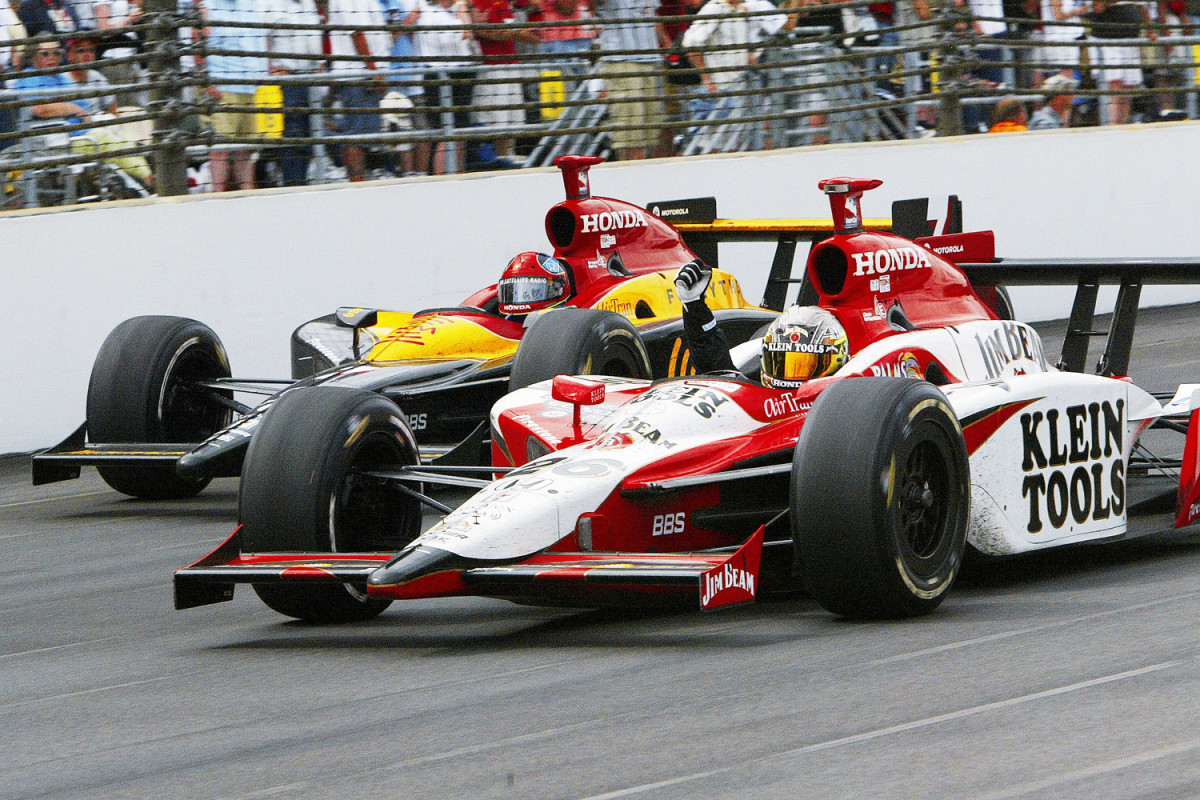
Dan Wheldon, shown here, won the Indy 500 in 2005, marking the first time an Englishman won the storied race since Graham Hill's victory in 1966. In 2011, Wheldon tragically lost his life in a 15-car accident at the IZOD IndyCar World Championship at Las Vegas Motor Speedway.
